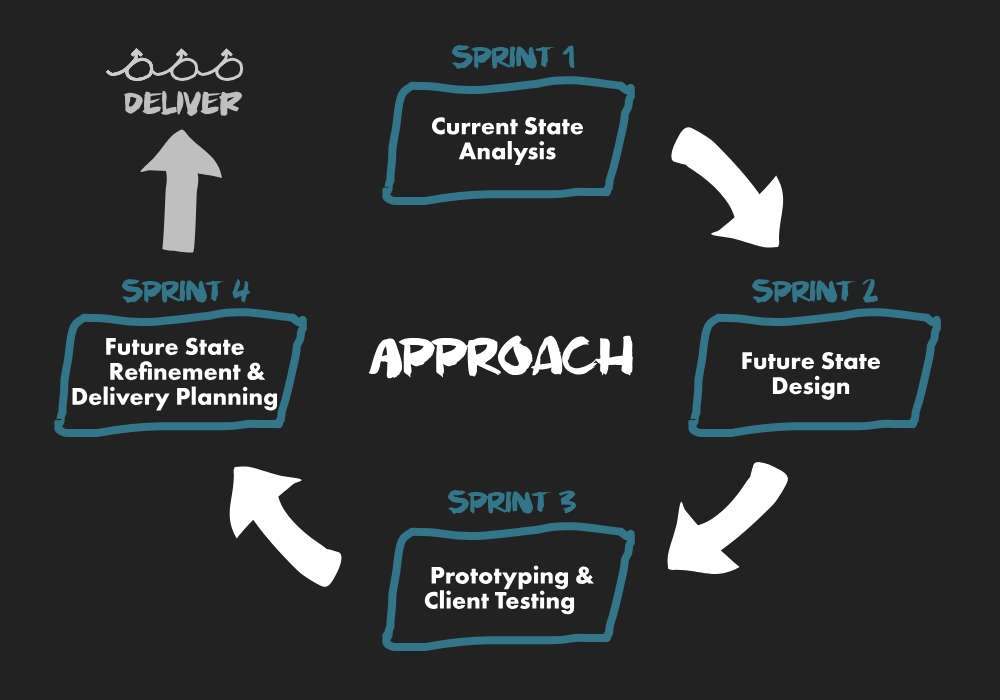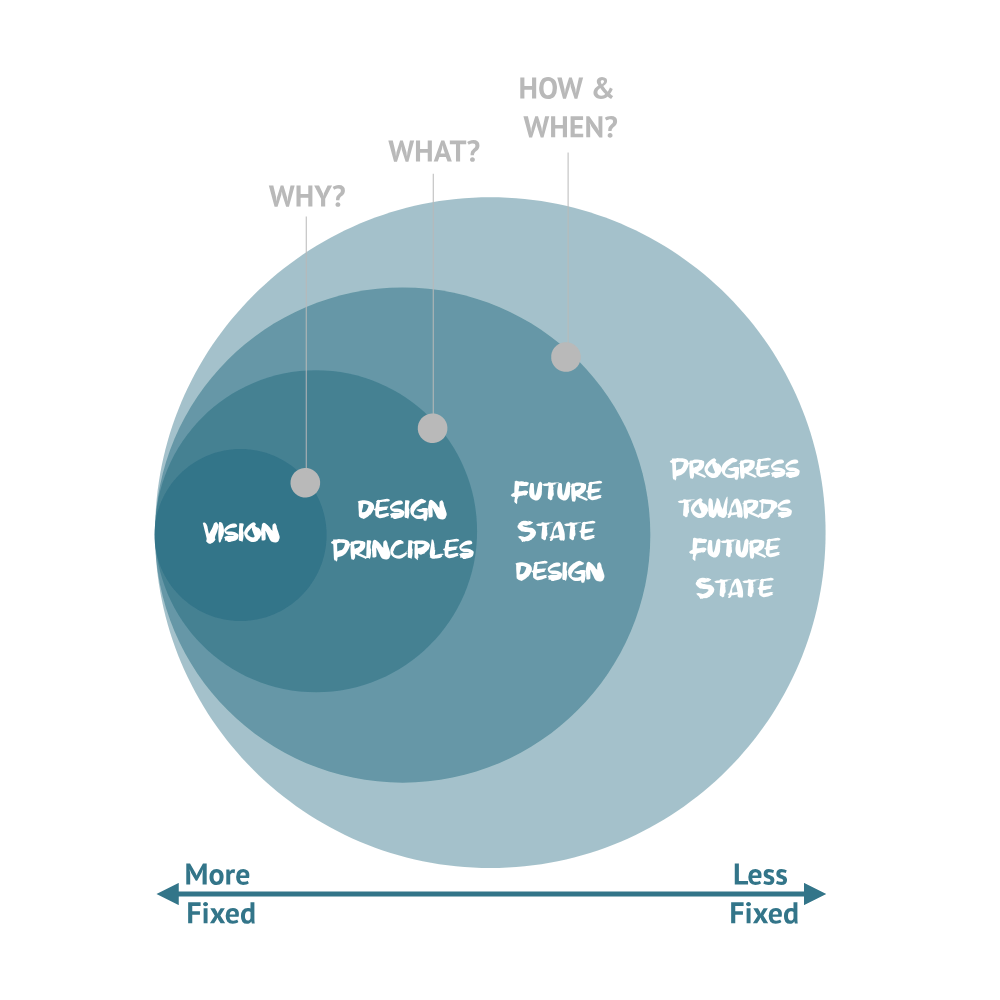Background
Cerebral Palsy Alliance (CPA), a non-profit disability provider based in NSW and the ACT, is disrupting its way of working. It’s goal is to remain financially viable whilst maintaining a people-first approach to delivering high-quality services. CPA have previously engaged Fire & Flint and Aginic to support them in applying Lean and Agile principles, tools and techniques to improve their internal processes and customer experience through the application of Kaizen Improvement Events.
Please refer to our previous post on optimising CPA’s scheduling process to learn more about Kaizen Improvement Events and CPA’s journey in applying this rapid improvement method.
The Kaizen Improvement Events conducted previously with CPA provided valuable, tangible outcomes that could be scaled across its sites to benefit both its clients and staff relatively quickly. Importantly, the collaborative and staff-led nature of this improvement process established a strong foundation for CPA to continue engaging and developing its people in Lean and Agile thinking to continuously improve their customer and staff experience. After conducting an end to end review of CPA’s value chain, it was identified that the service access (onboarding) process for new and existing clients was the next focus area for improvement.
The Opportunity
Rather than utilise a Kaizen Improvement Event, which is a more tactical and pragmatic approach for achieving rapid and incremental improvement, it was deemed that a more transformative and strategic approach should be adopted to radically challenge their current approach to onboarding clients. Fire & Flint and Mantel Group collaboratively designed a program for delivering an adaptive service access transformation strategy, with strong foundations in Lean and Agile delivery, that would support CPA in realising this next phase of their journey.
We live in a world in which things change and it is important to adapt alongside those things, and even more important to adapt intentionally towards a clear and meaningful vision that you believe in and own. Our goal was to develop a vision for the future of service access with CPA and provide them with the confidence and means to take ownership of their journey towards achieving the desired outcome. It was less about delivering a polished 200 slide PowerPoint presentation outlining a bullet-proof solution coupled with a rigorous, detailed and rigid implementation plan.
Our Approach: Transforming Service Access
Our first step was to establish a cross-functional core project team made up of leaders from each of CPAs core service and support areas (e.g. IT, Finance, Quality), and an internal (CPA) project owner to provide leadership and support to the project team. Our goal was to involve all key impacted stakeholders to have a voice and be empowered to make decisions about the future of service access at CPA. Everyone involved had skin in the game and an obligation to challenge one another and themselves in changing the way they worked.
The project was structured into four (4) phases or sprints, with each sprint designed to deliver insightful and actionable outcomes.
Project Structure:

Sprint One focused on exploring and understanding the current service access process and problem space. This involved understanding what was adding value to the clients of CPA during their onboarding experience, and what was not adding value (i.e. wasteful/frustrating activity) in their eyes. At the end of Sprint One, we had a clear vision for what we were trying to achieve (i.e. the objectives of this project), an understanding of key problems holding us back and their root causes, and solution hypotheses that we wanted to test in the following design phases.
Sprint Two then focused on designing a future state service access journey that we could test with real clients of CPA. Before designing the future state, we established a handful of key design principles with the core project team. Design principles act as high-level, internal success criteria that can be used to guide and assess the effectiveness of the future state process design. We developed the principles primarily based on our understanding of what is important in the eyes of our clients (i.e. customers) and staff, which we discovered in Sprint One. Once we had then settled on a future state service access process that we believed satisfied our design principles and met the needs of our clients, we developed a live prototype of the process in a web-based tool to simulate the look, feel and intention of the future state design for the testing phase in Sprint Three. Imagine this prototype as a dynamic series of interactive questions, answers and information structured in a web-form that allows us to present the future state process content, its sequence and purpose without relying solely on a detailed process map.
Our objective in Sprint Three was to test our future state service access process design with real clients (customers) of CPA. In our experience, the quality and richness of feedback received from customers when testing solutions is heavily dependent on how well an opportunity is presented and understood in their context. By developing a digital mock-up or simulation of how clients could experience onboarding in the future, with scenarios tailored to suit their specific current and past experiences with CPA, we were able to elicit focused and specific feedback around how and why the future state we proposed is better and/or worse than their past experiences with CPA. Based on the feedback we received directly from clients, we were then able to iterate and further improve our design to a point where we were comfortable it was achievable and meeting the needs of CPA’s clients.
Finally, Sprint Four was all about elaborating and refining the key requirements and considerations for achieving the future state process we had designed and validated in sprints two and three. We broke our core team up into separate working groups to develop a backlog of the deliverables for realising the future state process. We then prioritised the deliverables into an initial sequence (backlog) with high-level detail around scope, sizing, risks and dependencies associated with each item. However, we did not provide a fixed roadmap with timelines, or any expectation around how to achieve the desired outcomes. Our goal was for CPA to have a clear vision of where they needed to be (the why and what), and the confidence to know where and how to get started. But, we wanted CPA to take ownership of how and when they achieved the various elements of that vision.
We can summarise the intention of the four sprints in the following image. Whilst a vision and your guiding principles for getting there should be clear and relatively stable, how and when you arrive there should remain more fluid and adaptable based on internal and external environmental factors.
Levels of project resolution:

At the end of Sprint Four, we also provided guidance and support to CPA in establishing a core project delivery team to take ownership of the implementation of the delivery backlog and vision we have created for service access. CPA had what they needed to begin moving into the delivery phase of implementing the future state process.
The Outcomes
At the end of our four sprint (circa 3 month) engagement with CPA, we have managed to collectively achieve as a team what we set out to do, including:
- Collaboratively design a vision for the future that will provide a substantially better experience for both staff and clients that we believe in,
- Provide an understanding of the critical enablers and requirements for achieving the future state vision, and
- Develop the confidence and means for CPA to take ownership of the journey towards realising their future state service access journey.
To support CPA in achieving the above outcomes, we collectively delivered the following key outputs:
- A Future State Service Access process/customer journey,
- An interactive prototype of the Future State process/customer journey,
- A prioritised project delivery backlog,
- Supporting visual representations of the Future State process and high-level journey for getting there, and
- Implementation guidance and recommendations.
CPA is now in the process of organising and preparing their delivery team for implementing and piloting their future state service access process at their Allambie site in NSW, before scaling the changes more broadly to their other sites across the county impacting approximately 6,000 clients.
It has been a rewarding experience for us to work alongside CPA in their pursuit of excellence in disability care. We have been consistently impressed and inspired by the passion exhibited by CPA’s people at all levels of their business. Whilst the format and structure of this program was designed to foster collaboration across business lines and departments, the secret sauce was the capability and integrity of the people we were working with. We would also like to specifically express our gratitude to Robyn Cummins, an incredibly caring and motivated person, who has provided continued leadership and incredible support to us through our ongoing engagements with CPA.
